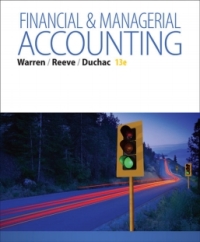Accounting for materials costs In papermaking operations for companies such as International Paper Company, wet pulp is
Question:
Accounting for materials costs In papermaking operations for companies such as International Paper Company, wet pulp is fed into paper machines, which press and dry pulp into a continuous sheet of paper.
The paper is formed at very high speeds (60 mph). Once the paper is formed, the paper is rolled onto a reel at the back end of the paper machine. One of the characteristics of papermaking is the creation of “broke” paper. Broke is paper that fails to satisfy quality standards and is therefore rejected for final shipment to customers. Broke is recycled back to the beginning of the process by combining the recycled paper with virgin (new) pulp material. The combination of virgin pulp and recycled broke is sent to the paper machine for papermaking. Broke is fed into this recycle process continuously from all over the facility.
In this industry, it is typical to charge the papermaking operation with the cost of direct materials, which is a mixture of virgin materials and broke. Broke has a much lower cost than does virgin pulp. Therefore, the more broke in the mixture, the lower the average cost of direct materials to the department. Papermaking managers will frequently comment on the importance of broke for keeping their direct materials costs down.
a. How do you react to this accounting procedure?
b. What “hidden costs” are not considered when accounting for broke as described?
Step by Step Answer:

Financial And Managerial Accounting
ISBN: 9781305267831,9781305267848
13th Edition
Authors: Carl S. Warren , James M. Reeve , Jonathan Duchac






